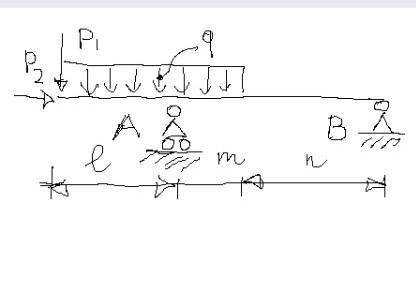1)and 2):F1=1000N; F2=1110N; q=560 N;I=1.05 m; m =1.10 m; n=1.20m
...

Engineering, 21.12.2020 14:00 skiddymark3ox93za
1)and 2):F1=1000N; F2=1110N; q=560 N;I=1.05 m; m =1.10 m; n=1.20m


Answers: 2


Other questions on the subject: Engineering

Engineering, 03.07.2019 15:10, margaret1758
If you were designing a bumper for a car, would you prefer it to exhibit elastic or plastic deformation? why? consider the functions of a bumper in both a minor "fender-bender" and a major collision.
Answers: 1

Engineering, 04.07.2019 19:10, Calliedevore
The proportional limit is always greater than the yield strength for a material. a)-trune b)- false
Answers: 3


Engineering, 04.07.2019 19:20, rida10309
At steady state, air at 200 kpa, 325 k, and mass flow rate of 0.5 kg/s enters an insulated duct having differing inlet and exit cross-sectional areas. the inlet cross-sectional area is 6 cm2. at the duct exit, the pressure of the air is 100 kpa and the velocity is 250 m/s. neglecting potential energy effects and modeling air as an 1.008 kj/kg k, determine ideal gas with constant cp = (a) the velocity of the air at the inlet, in m/s. (b) the temperature of the air at the exit, in k. (c) the exit cross-sectional area, in cm2
Answers: 2
You know the right answer?
Questions in other subjects:




History, 16.07.2019 01:00



History, 16.07.2019 01:00


History, 16.07.2019 01:00

History, 16.07.2019 01:00



